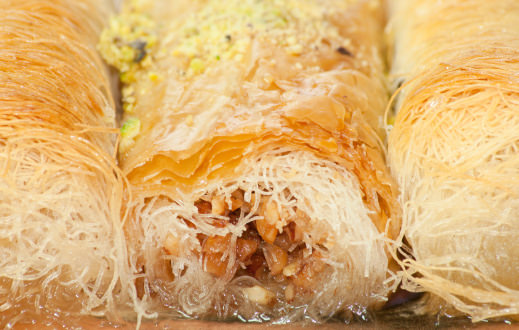mastichas09
Active member
I just stumbled upon this great video on how to make kataifi! How do you like yours? With walnuts, almonds or pistachios?
Follow along with the video below to see how to install our site as a web app on your home screen.
Note: This feature may not be available in some browsers.

I like using walnuts and then adding pistachios on top for decoration because they're so colorfulWhen I make Kataifi, I mostly use walnuts, unless I have almonds that I need to get rid of. Walnuts are my favorite, but then again, I am a stickler for tradition. Walnuts are the nut my family always uses, and I find that I prefer it. I have also used a combination of walnuts and almonds in a pinch. The last time I made it, I ran out of walnuts and had to use crushed almonds so that I can have the correct proportion of nuts in the mixture.
